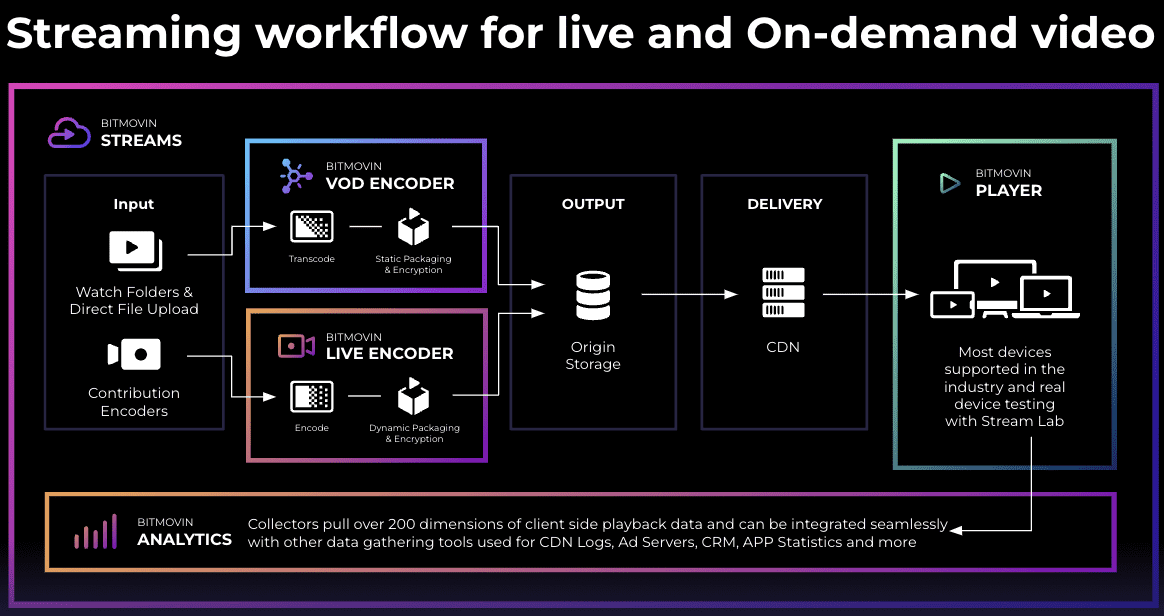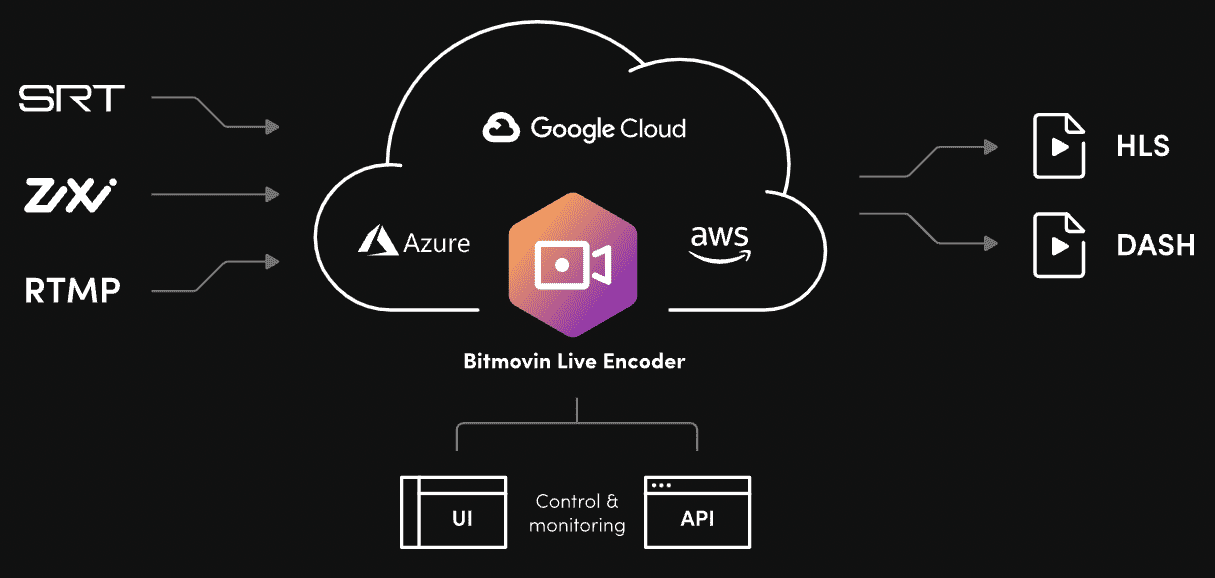Religious and faith-based video streaming has gained significant popularity in recent years as a powerful way to connect and engage with a broad global audience. A considerable amount of adoption happened recently when the world was in lockdown and people still wanted to “attend” their house of worship prayers or engage with religious content. However, streaming online comes with its own unique set of challenges that need to be addressed to ensure a seamless and enriching streaming experience for viewers. From content hosting and video compression to device support and accessibility, religious video streaming workflows require robust, easy-to-use solutions that are also cost-effective. These challenges affect each and every religious organization, especially when you don’t have an experienced video development team or a hefty budget.
In this blog, we will explore the main challenges faced in religious video streaming workflows and discuss possible solutions for them.
1. File Storage: Local vs. The Cloud
Many religious groups lack the in-house expertise necessary to successfully manage their video content. Many maintain internal networks, which can lead to content silos, making access difficult for team members in different locations. Internal-based systems are more secure but become more costly as content libraries expand and additional hardware is needed, and this doesn’t consider if they would be using a cloud encoder/packager to make their content streamable. This is why cloud-based solutions offer a transformative way to store, manage, and share a vast array of religious video content with your team, no matter where they are located. The cloud provides scalability, ensuring the content library can grow as the organization’s offerings expand.
Cloud environments come with robust security measures to give houses of worship the ability to protect their valuable content while enabling seamless collaboration and integration with other technologies. Depending on their capabilities, they also help you efficiently convert video information into formats and resolutions suited for streaming to empower your content further. This is where cost becomes a factor, as cloud workflows help lower prices dramatically through the integrations they have readily available. Additionally, you don’t always need to have advanced technical knowledge to set it all up, as providers such as Bitmovin have focused on providing solutions that are self-service, easy to use, and can be accessed either through a dashboard UI or API library.

Live encoding workflow with Bitmovin
2. Live & On-Demand Encoding: Setting the Right Bitrate
For houses of worship, embracing live and on-demand encoding can bring significant benefits to their streaming endeavors. Encoding is essential as it compresses and reduces the size of video files or live inputs to make them easier to store/stream and take up less space or bandwidth. This differs depending on the workflow for live or on-demand content.
VOD Encoding
For hosted video files, this can be done more efficiently through advanced video compression formats such as H.264, H.265 (HEVC), VP9, and AV1. These formats maintain the quality of the file while lowering the bitrate needed to stream them, meaning less bandwidth is needed to stream the best quality video. The challenge here is that many religious organizations need to encode multiple renditions of their files to cover each device type and available bandwidth scenario. This requires more computational power and storage, which in turn increases costs dramatically. This is where Per-Title encoding is the solution.
Per-Title encoding involves an algorithm that automatically and dynamically adjusts the bitrate based on the complexity of the content being streamed. This means that simple or static scenes may have a lower bitrate, conserving bandwidth, while more complex or dynamic scenes can have a higher bitrate to maintain optimal quality. This adaptive approach ensures that viewers receive the best possible streaming experience regardless of the content’s characteristics. Per-title also helps you save substantially on costs as it minimizes the rendition and encoding effort needed. Find out more on Per-title encoding on our dedicated page.
Live Encoding
Live encoding allows real-time broadcasting of religious services, events, and sermons to remote viewers, enabling them to participate in the worship experience regardless of their physical location. It breaks down the barriers of distance, bringing a sense of community to those who cannot attend in person. However, a couple of the main challenges with live encoding are the stability of the stream and scalability. To keep remote viewers engaged, streams need to stay up and maintain the highest quality of experience for the user. This is where a reliable internet connection plays a big part, along with an encoder that supports the file formats mentioned above, as they help reduce the bitrate needed to playback the live stream. This saves bandwidth for the viewer and improves stream stability, especially for those with slower internet connections.

Live encoding workflow with Bitmovin
Additionally, costs and computational power for encoding matter for live streaming, which is why Per-Title will eventually be a major factor and one we talk about in our blog on Per-Title encoding for live streaming.
3. Device Support: Reaching a Larger Audience
The next challenge is related to video playback. The video player is essential for houses of worship as it ensures smooth playback of live or on-demand content on the platforms across every device supported. You should also be able to give users a unique experience by customizing the player interface to align with your faith or religious-based streaming service’s branding, supporting accessibility features and interactive elements for audience engagement, and integrating with analytics platforms to provide insights. There are multiple challenges to ensuring quality playback, and a couple of them are the ability to support more devices and ensure your player adapts to the user’s available bandwidth.
For a house of worship to expand its audience reach and support playback over the web, mobile, smart TVs, and other devices, software development kits are needed. While this can become a bit more technical depending on the devices you’re looking to support, the video player you’re utilizing also must have support for them, as it will help you deploy and deliver a native and seamless experience for the viewers you’re looking to engage. A video player, like Bitmovin’s Player, that covers a large number of devices, is the best solution, as it helps you get set up for the devices you want to stream on while giving you the tools to support more in the future. Additionally, to provide the best user experience while streaming content, the player must constantly monitor the viewer’s streaming environment to adapt to any sudden changes in bandwidth availability. By having the right encoded renditions of your content, your player should be able to handle this with ease.
4. User Experience: Measuring Content Quality
For religious streaming services, knowing how your viewers are engaging with your content is essential to understanding how your streams are doing. By tracking video performance metrics, user engagement, and audience behavior, you can get a complete picture of how your viewers’ experience is and improve the way your content is provided to them. When implementing analytics tools, you should be able to monitor multiple metrics, such as:
Audience metrics
- Play attempts,
- Unique users,
- Concurrent users,
- Plays per country,
- Plays per device
Quality of experience metrics
- Seek events
- Time of video start
- Length of video
- Bitrate
- Buffering
The challenge with video analytics is making sure you have access to the necessary dimensions that give you the specific, actionable data you need to evaluate and act on. Depending on your setup, analytics will either be included in your end-to-end platform or another tool you can integrate into your streaming workflows, such as Bitmovin’s Streams and Analytics.
In Conclusion
In sum it up, the issues that arise when streaming video to religious and faith-based organizations can be efficiently addressed with the right solutions. The cloud provides scalability, accessibility, and cost efficiency for content hosting and management. A dependable video player improves playing on a variety of devices, while live and on-demand video encoding bitrate optimization guarantees smooth streaming experiences. Understanding how an audience interacts with a video and how to improve streaming techniques is made possible by video analytics. Churches that adopt such technologies will be able to better serve their online followers, grow their communities, and reach more people.
If you want to see how Bitmovin’s solutions can help you simplify your existing streaming workflow or give you the tools to launch your video streaming platform, sign up for our 30-day free trial to start testing them today (No credit card required).




